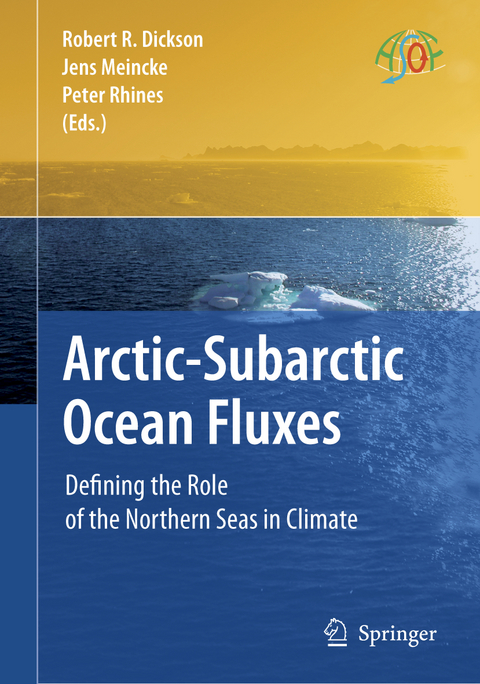
Arctic-Subarctic Ocean Fluxes
Springer (Verlag)
978-90-481-7721-9 (ISBN)
Arctic–Subarctic Ocean Fluxes: Defining the Role of the Northern Seas in Climate.- The Inflow of Atlantic Water, Heat, and Salt to the Nordic Seas Across the Greenland–Scotland Ridge.- Volume and Heat Transports to the Arctic Ocean Via the Norwegian and Barents Seas.- Variation of Measured Heat Flow Through the Fram Strait Between 1997 and 2006.- Is Oceanic Heat Transport Significant in the Climate System?.- Long-Term Variability of Atlantic Water Inflow to the Northern Seas: Insights from Model Experiments.- Climatic Importance of Large-Scale and Mesoscale Circulation in the Lofoten Basin Deduced from Lagrangian Observations.- Freshwater Storage in the Northern Ocean and the Special Role of the Beaufort Gyre.- Modelling the Sea Ice Export Through Fram Strait.- Fresh-Water Fluxes via Pacific and Arctic Outflows Across the Canadian Polar Shelf.- The Arctic–Subarctic Exchange Through Hudson Strait.- Freshwater Fluxes East of Greenland.- The Changing View on How Freshwater Impacts the Atlantic Meridional Overturning Circulation.- Constraints on Estimating Mass, Heat and Freshwater Transports in the Arctic Ocean: An Exercise.- Variability and Change in the Atmospheric Branch of the Arctic Hydrologic Cycle.- Simulating the Terms in the Arctic Hydrological Budget.- Is the Global Conveyor Belt Threatened by Arctic Ocean Fresh Water Outflow?.- Simulating the Long-Term Variability of Liquid Freshwater Export from the Arctic Ocean.- The Overflow Transport East of Iceland.- The Overflow Flux West of Iceland: Variability, Origins and Forcing.- Tracer Evidence of the Origin and Variability of Denmark Strait Overflow Water.- Transformation and Fate of Overflows in the Northern North Atlantic.- Modelling the Overflows Across the Greenland–Scotland Ridge.- Satellite Evidence ofChange in the Northern Gyre.- The History of the Labrador Sea Water: Production, Spreading, Transformation and Loss.- Convective to Gyre-Scale Dynamics: Seaglider Campaigns in the Labrador Sea 2003–2005.- Convection in the Western North Atlantic Sub-Polar Gyre: Do Small-Scale Wind Events Matter?.- North Atlantic Deep Water Formation in the Labrador Sea, Recirculation Through the Subpolar Gyre, and Discharge to the Subtropics.- Accessing the Inaccessible: Buoyancy-Driven Coastal Currents on the Shelves of Greenland and Eastern Canada.
| Erscheint lt. Verlag | 5.11.2010 |
|---|---|
| Zusatzinfo | X, 736 p. |
| Verlagsort | Dordrecht |
| Sprache | englisch |
| Maße | 155 x 235 mm |
| Themenwelt | Naturwissenschaften ► Biologie ► Ökologie / Naturschutz |
| Naturwissenschaften ► Geowissenschaften ► Geografie / Kartografie | |
| Naturwissenschaften ► Geowissenschaften ► Hydrologie / Ozeanografie | |
| Naturwissenschaften ► Geowissenschaften ► Meteorologie / Klimatologie | |
| ISBN-10 | 90-481-7721-9 / 9048177219 |
| ISBN-13 | 978-90-481-7721-9 / 9789048177219 |
| Zustand | Neuware |
| Haben Sie eine Frage zum Produkt? |
aus dem Bereich


